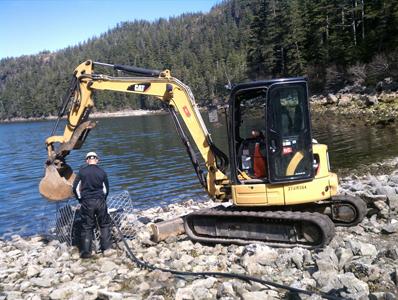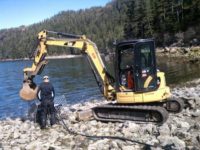The treatment systems consisted of small equipment buildings housing pumps, controls, and reagent solution that were placed on each beach. The reagent solution, including hydrogen peroxide as an oxygen source and sodium tripolyphosphate and lithium nitrate to support rapid biodegradation, was applied to the subsurface at each location by injection through a grid of wells. The treatment systems were designed to operate continuously in isolated locations over a summer pilot test study period with only weekly maintenance.
Farallon coordinated fabrication of the four treatment systems at a contractor’s facility in Seattle prior to their shipment to Alaska, and assisted in coordinating permitting and system construction at the Alaska locations.
The data collected from the project are being used to develop approaches to address the 60 to 100 tons of oil contamination estimated by the National Oceanic and Atmospheric Administration to remain on Prince William Sound beaches from the Exxon Valdez oil spill.

